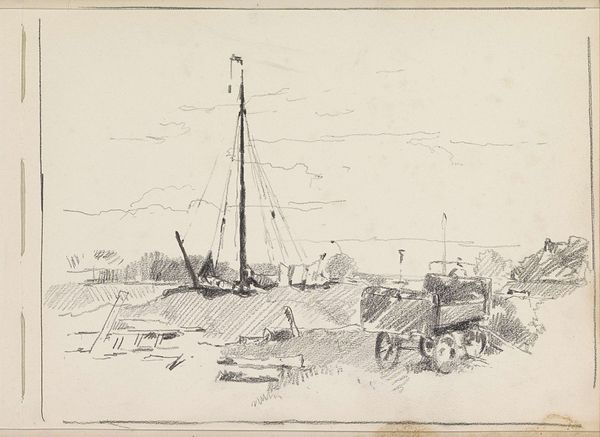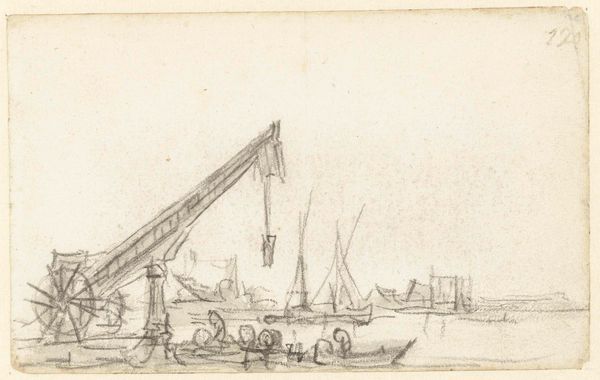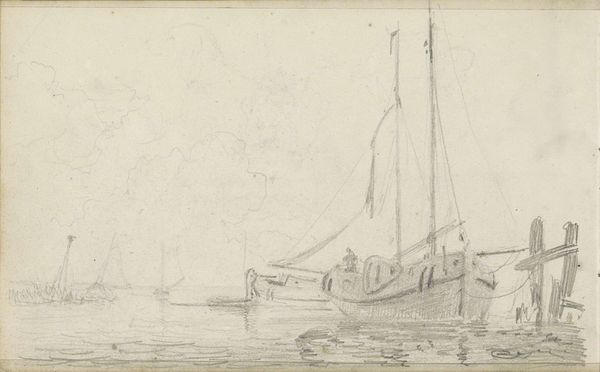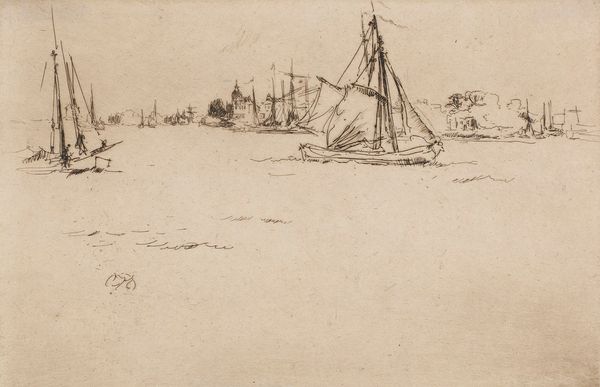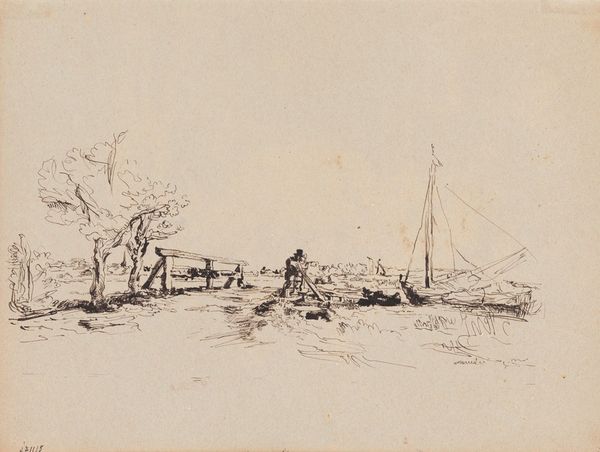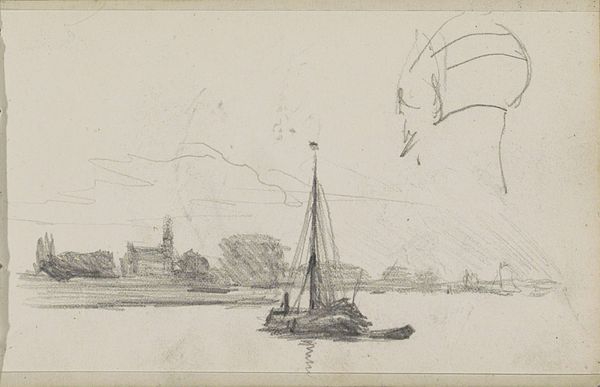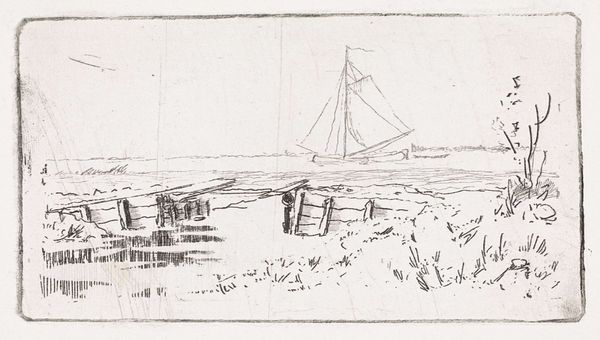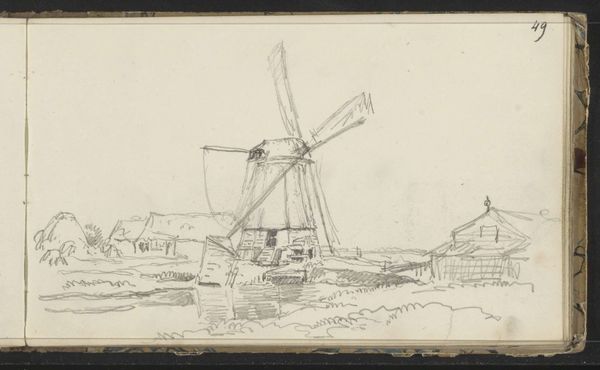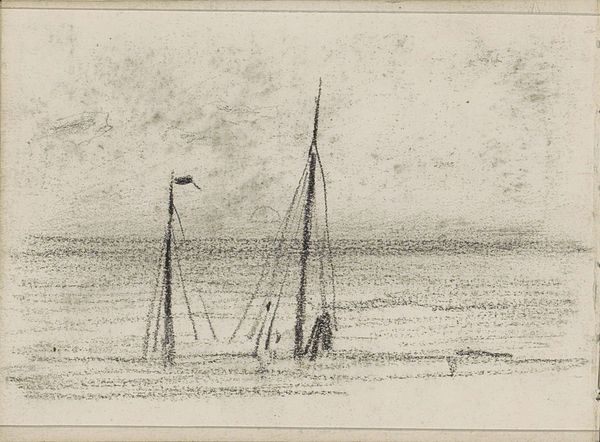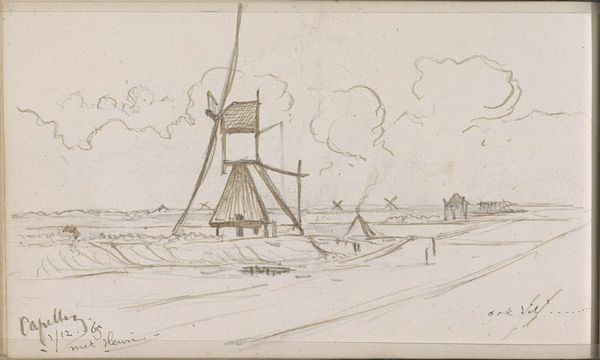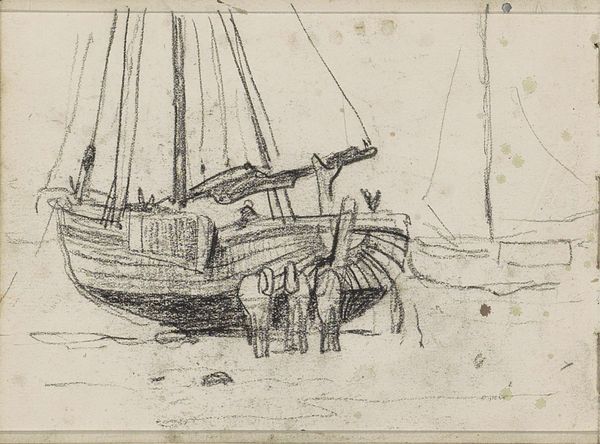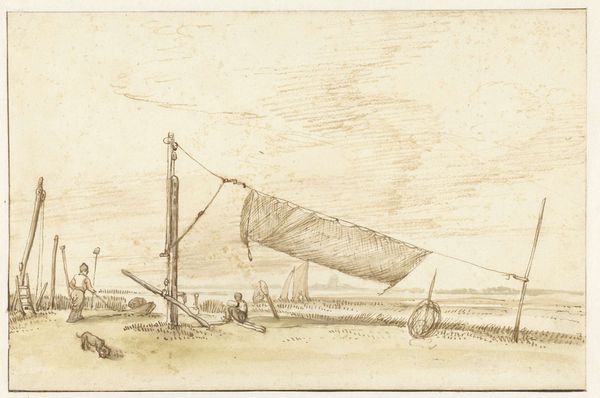
drawing, pencil, charcoal
#
drawing
#
dutch-golden-age
#
impressionism
#
landscape
#
pencil
#
charcoal
#
realism
Copyright: Rijks Museum: Open Domain
Curator: I’m struck by the ethereal quality of this piece, almost dreamlike. Editor: This drawing, created by Anton Mauve sometime between 1848 and 1888, depicts "Two Sailing Ships by the Coastline.” It resides here at the Rijksmuseum. The artist used both pencil and charcoal to conjure this maritime scene. Curator: Charcoal...yes, you see that heavy darkness used to anchor one ship to the immediate foreground; then pencil lifting the other boat into a far, barely reachable distance. I wonder about the emotional state Mauve was trying to project here with that specific, suggestive symbolism? Editor: That contrast definitely directs our reading. Dutch society during that period underwent significant social changes impacting artistic subjects. Perhaps Mauve felt compelled to depict labor and the human relationship to nature in ways more aligned with realist and impressionist movements? These were significant responses to urbanisation. Curator: It also seems very deliberately incomplete, capturing a moment that slips quickly into the past, like a fading memory. Boats carry tremendous cultural weight, especially for the Dutch, but in what ways are these boats more representative than literal? Is Mauve suggesting that national identity itself is in decline? Editor: Interesting speculation. It's worth noting Mauve's place within The Hague School. Their emphasis on atmosphere suggests the boats aren’t mere symbols, but functional objects, elements of the daily life. Still, your point about the incomplete nature, the impressionistic touch, suggests Mauve acknowledging the unreliability of objective vision. Curator: Exactly, and that's how these vessels become more symbolic vehicles. He makes the scene intimate rather than monumental, focusing less on national pride and more on personal and collective experience. This aligns with similar psychological symbolism shifts in late 19th century literature too. Editor: Well, viewed that way, these humble materials convey a lot about how artists reflected national identity shifts in art and social shifts. Curator: I agree! There's always something poignant about these understated works. Editor: It adds complexity. The scene invites further thinking about identity, labour, and nation, I’d say.
Comments
No comments
Be the first to comment and join the conversation on the ultimate creative platform.
